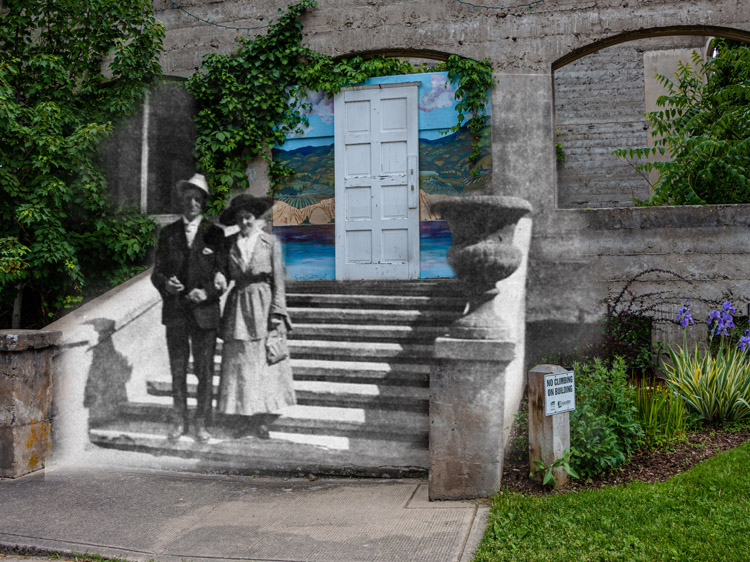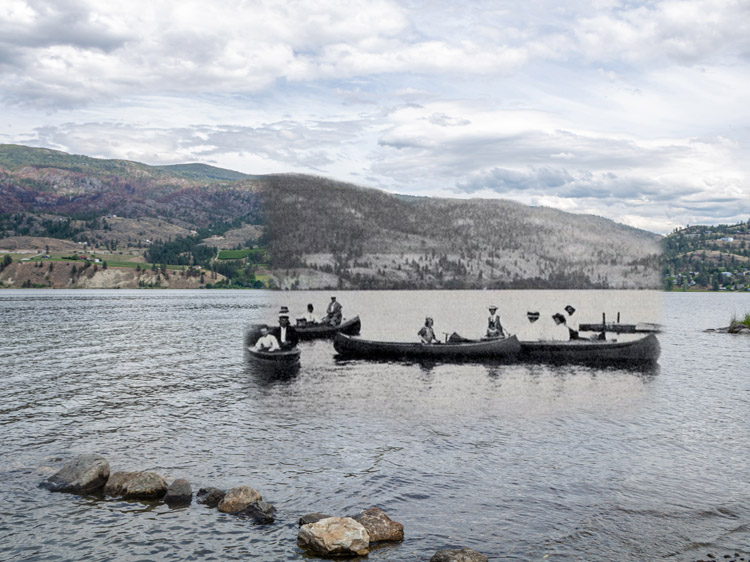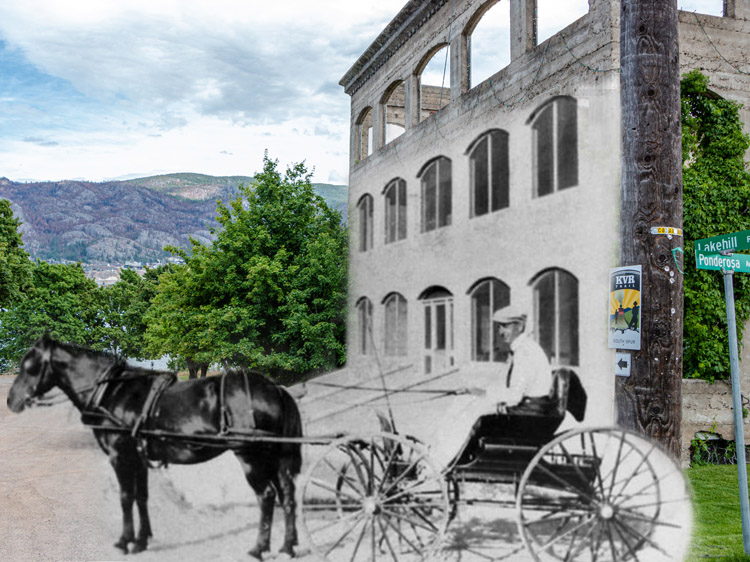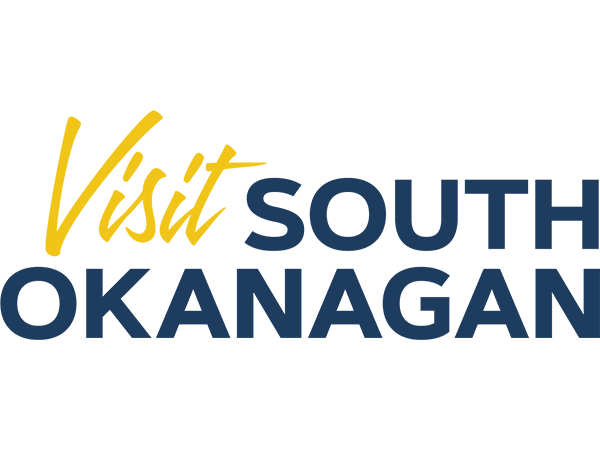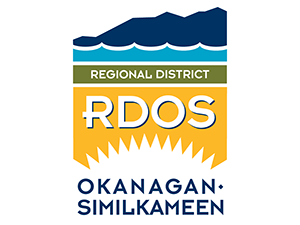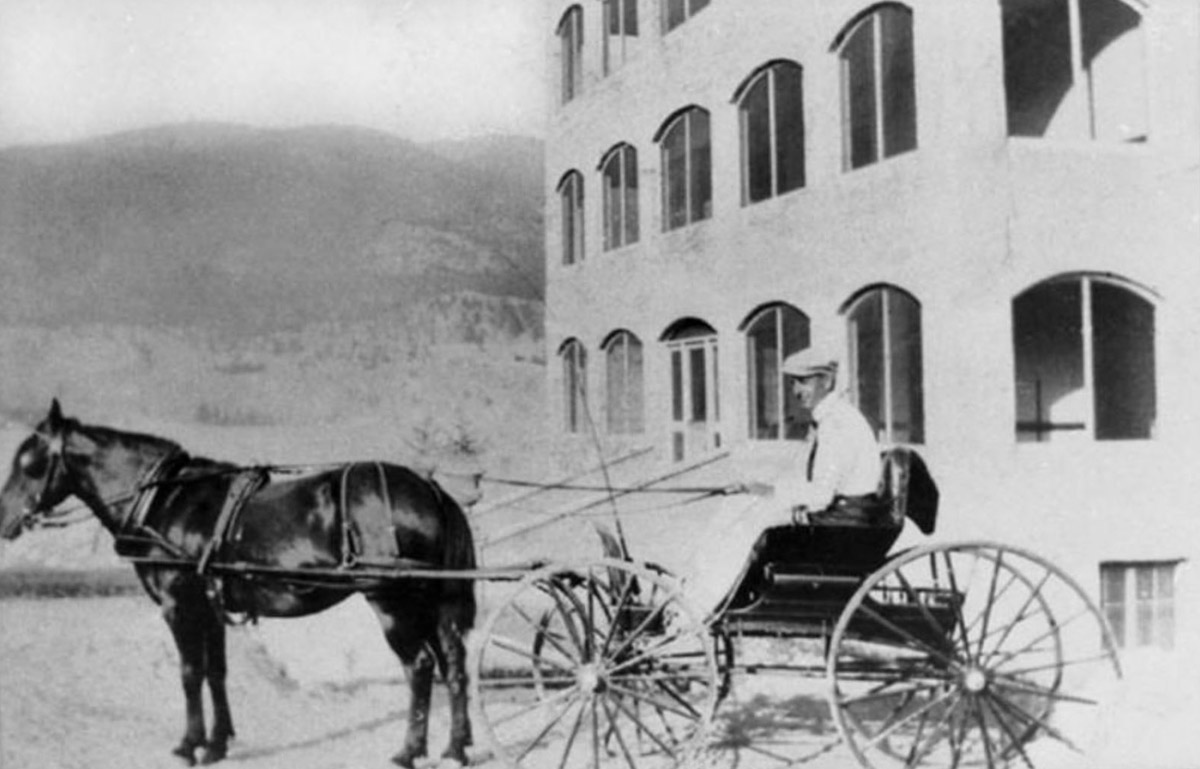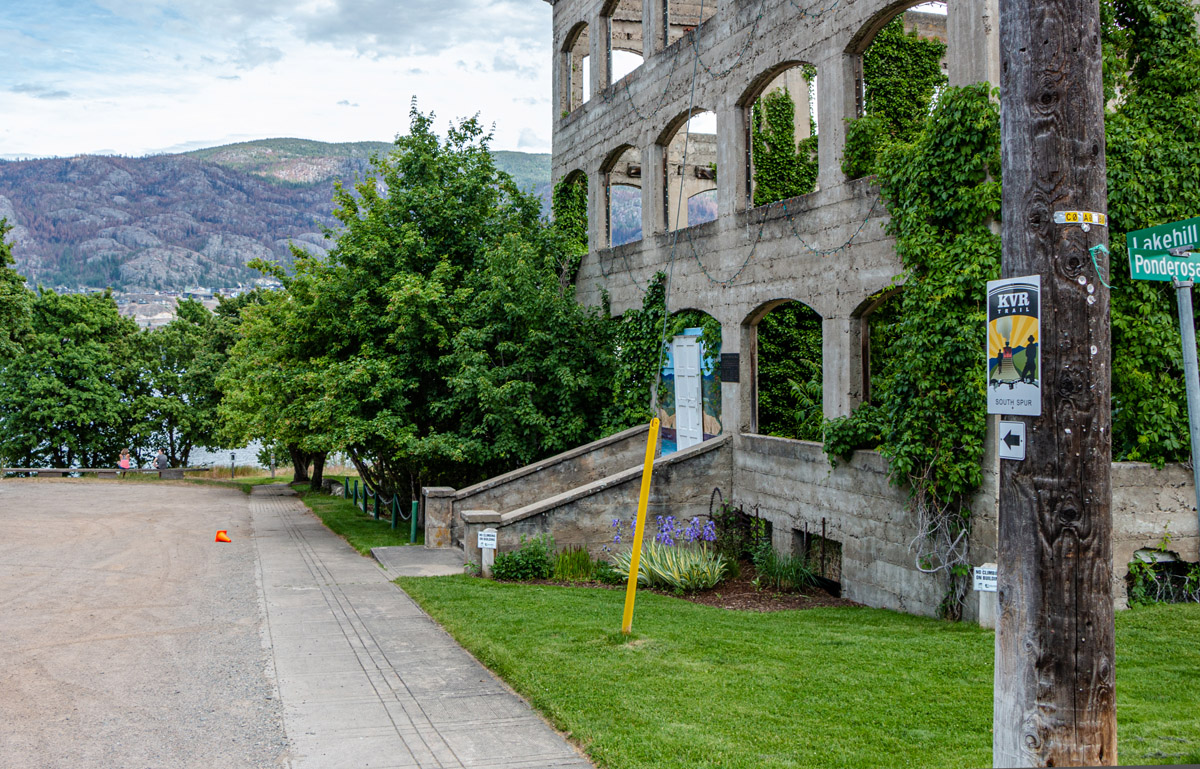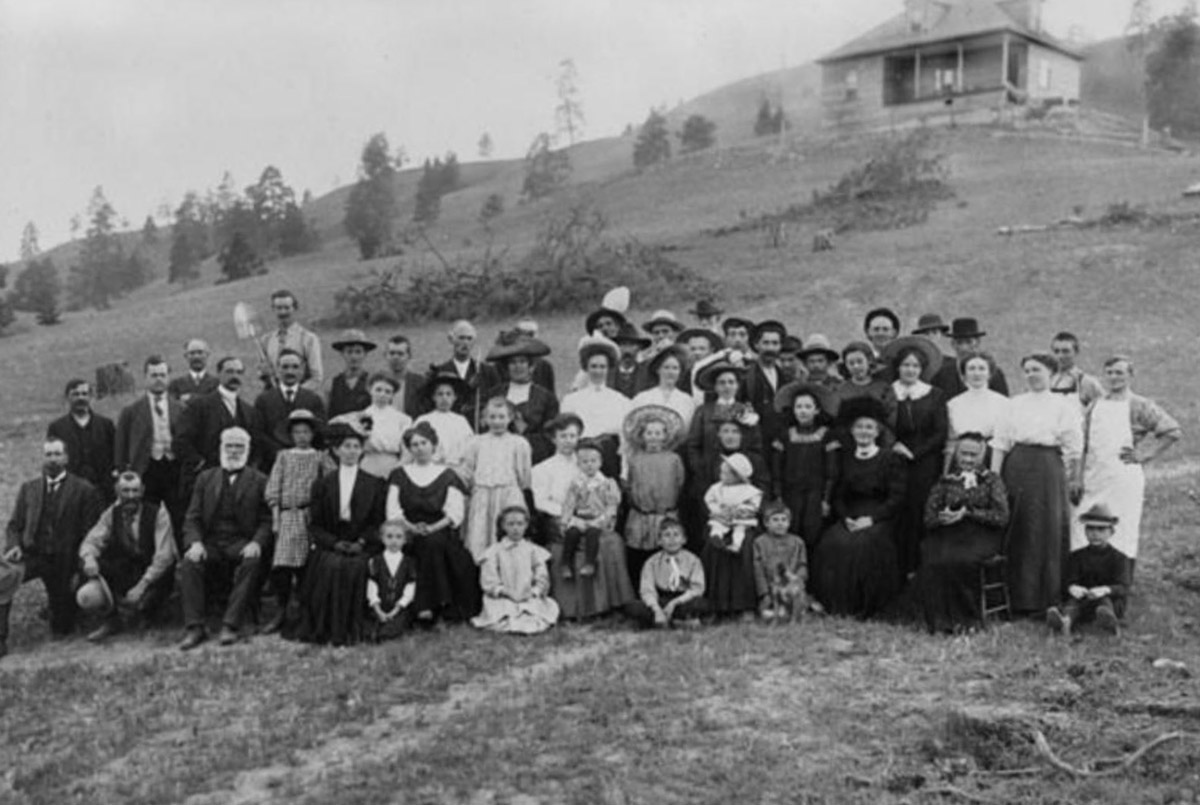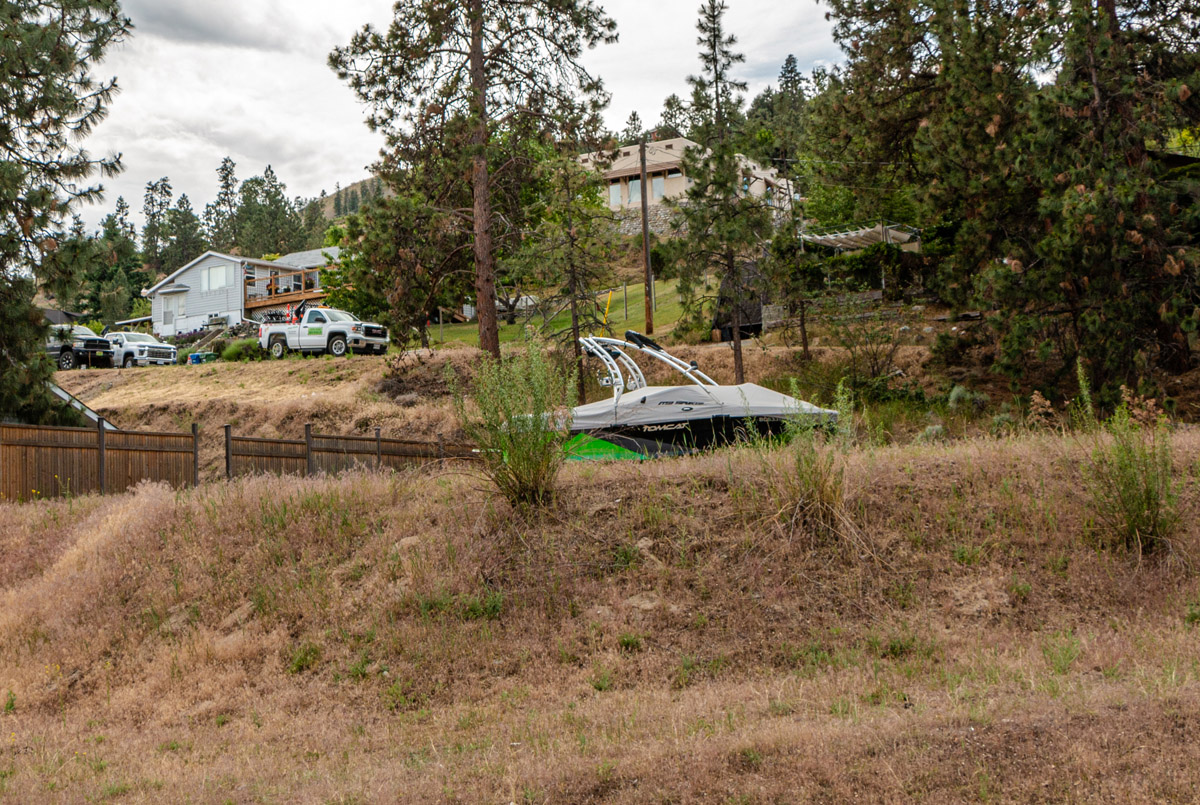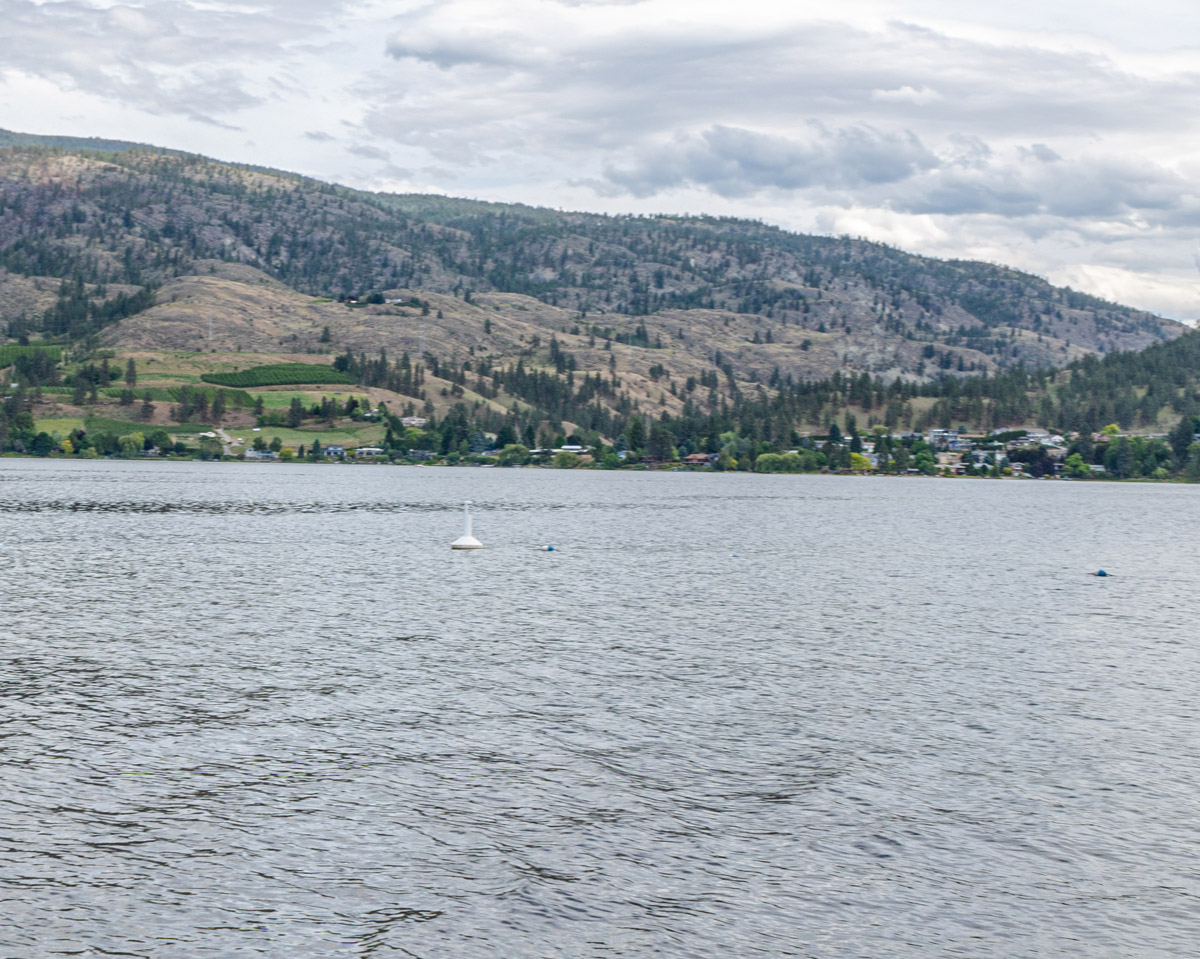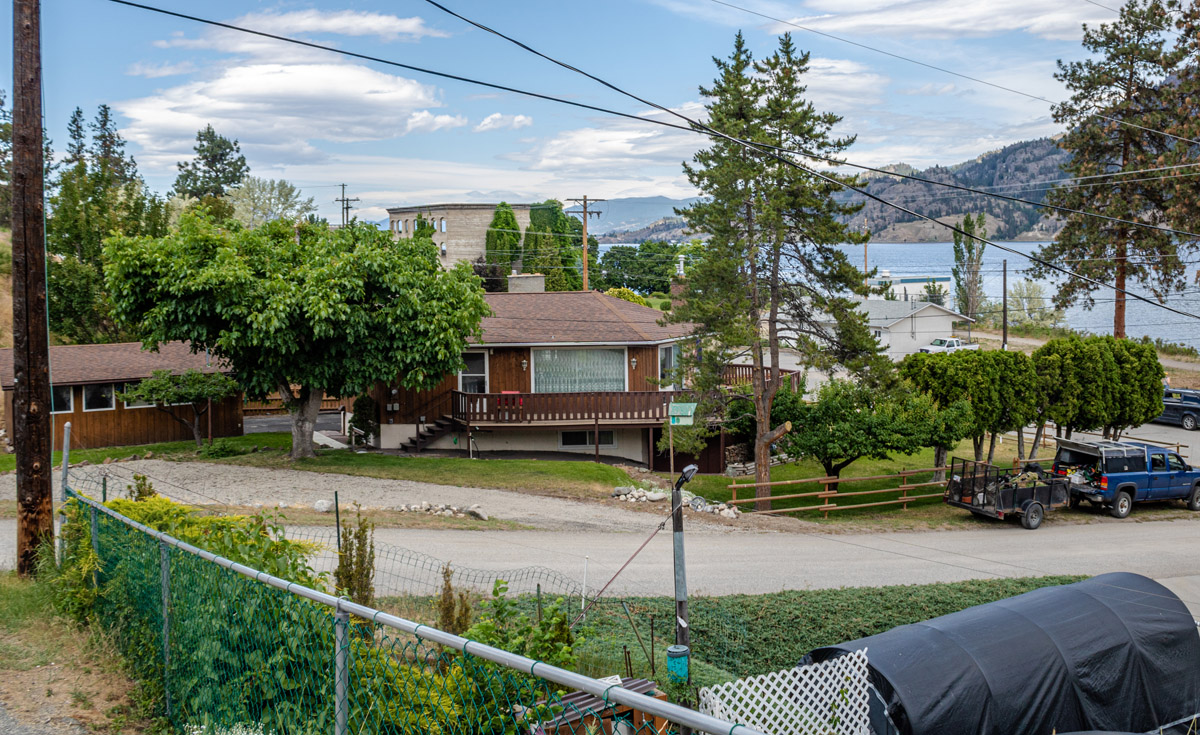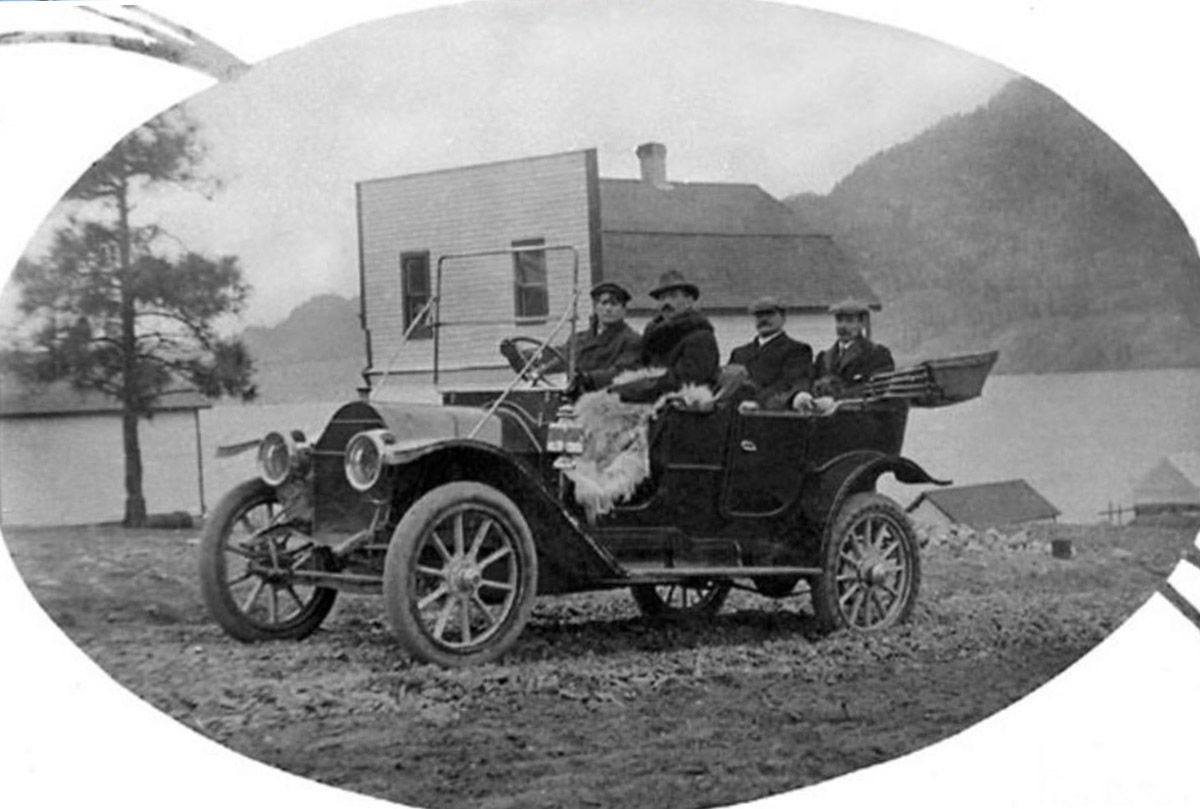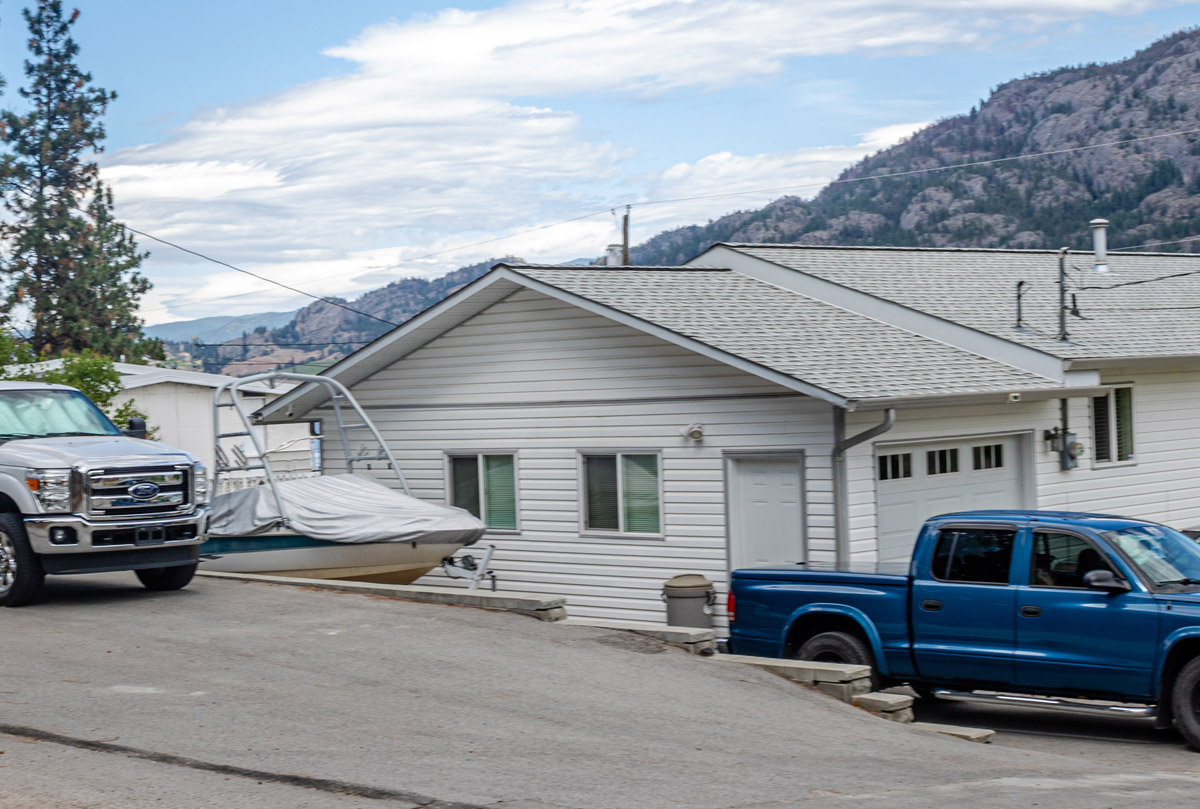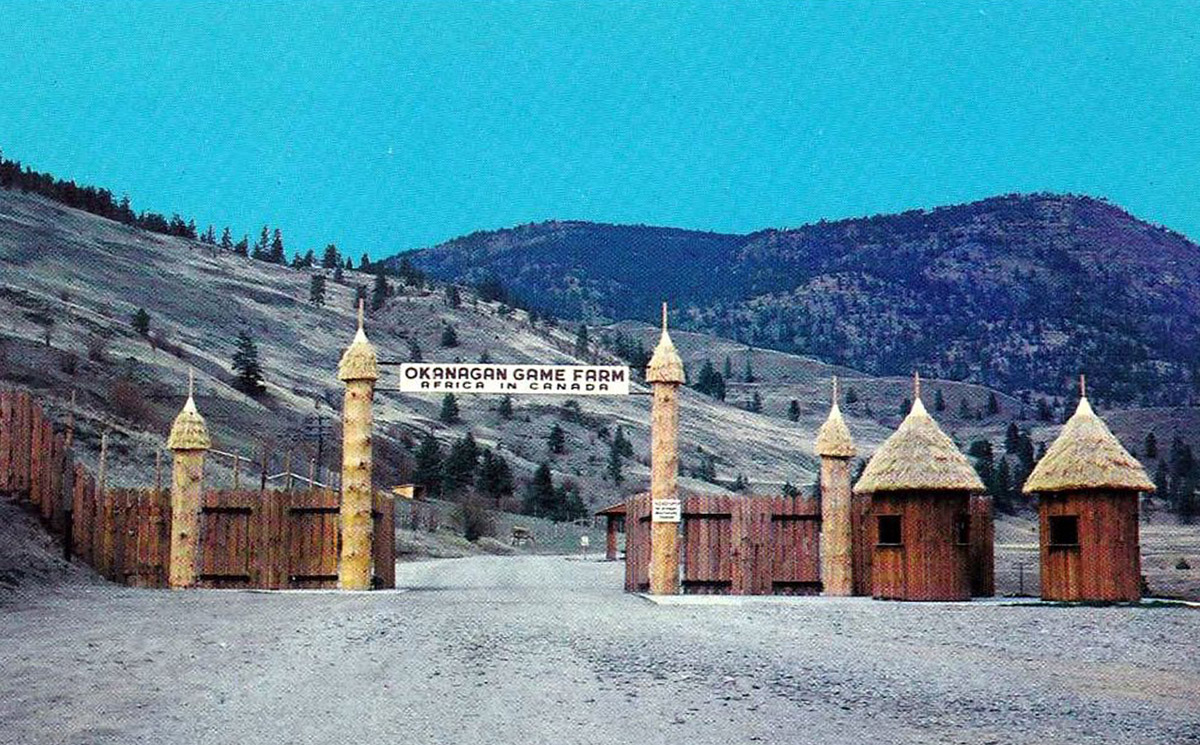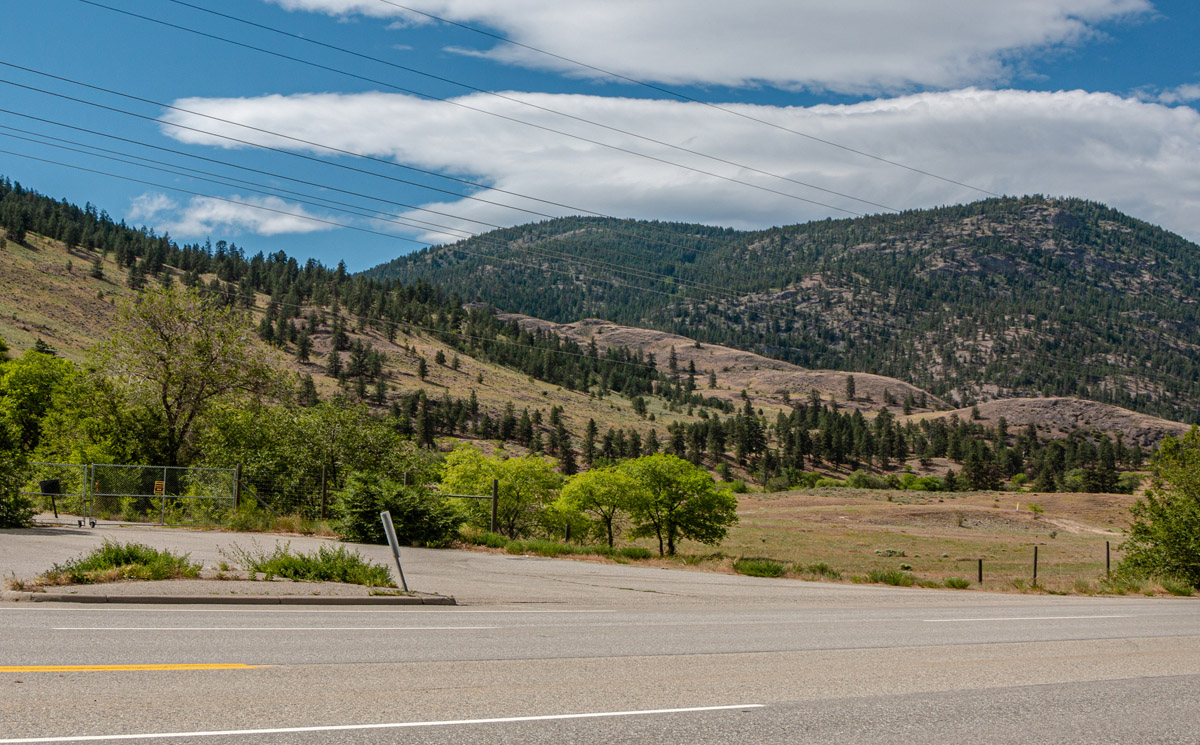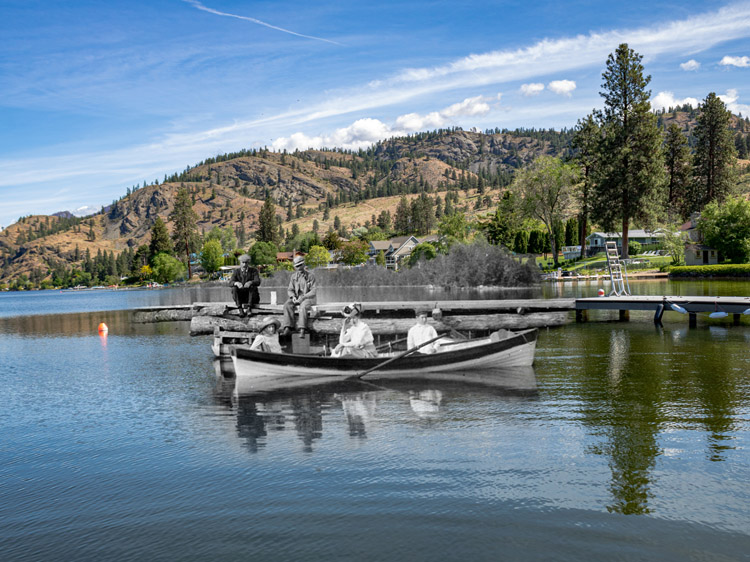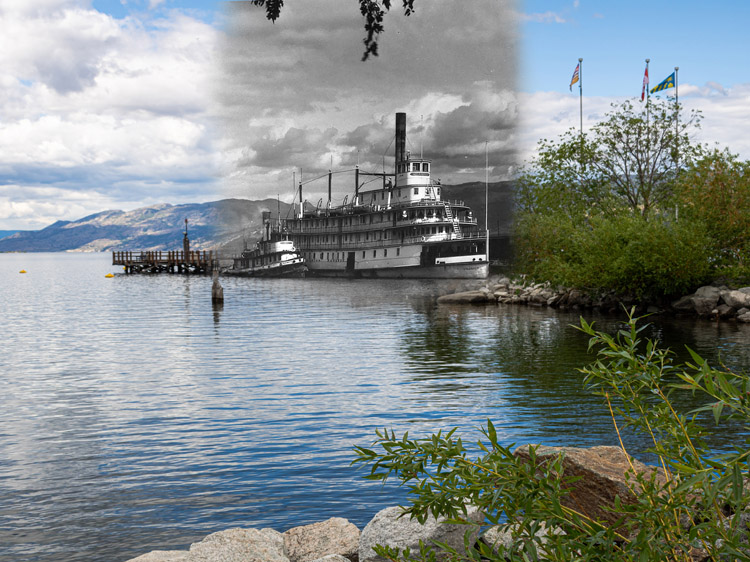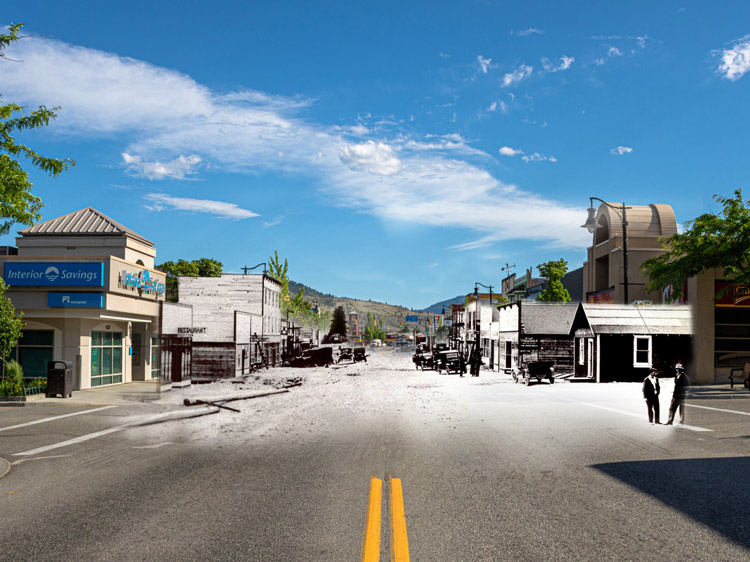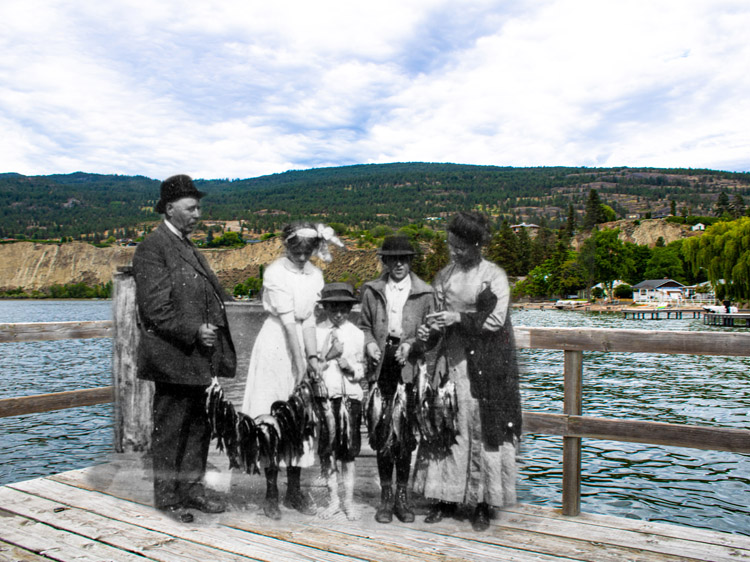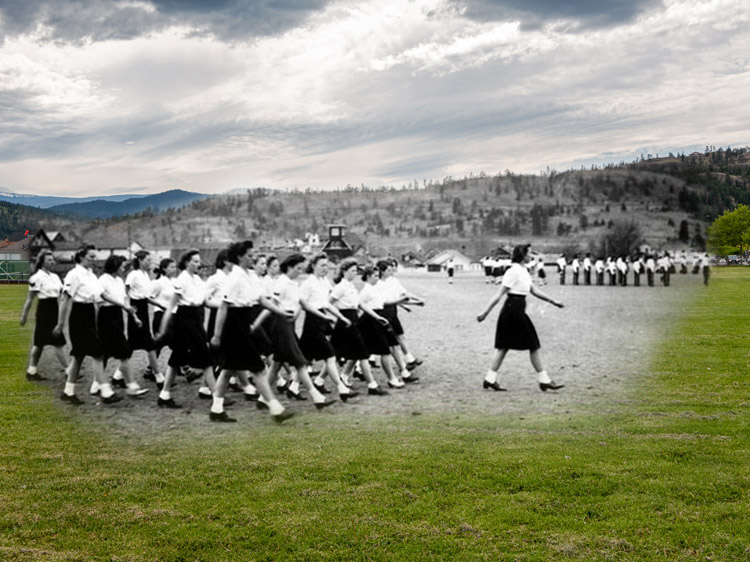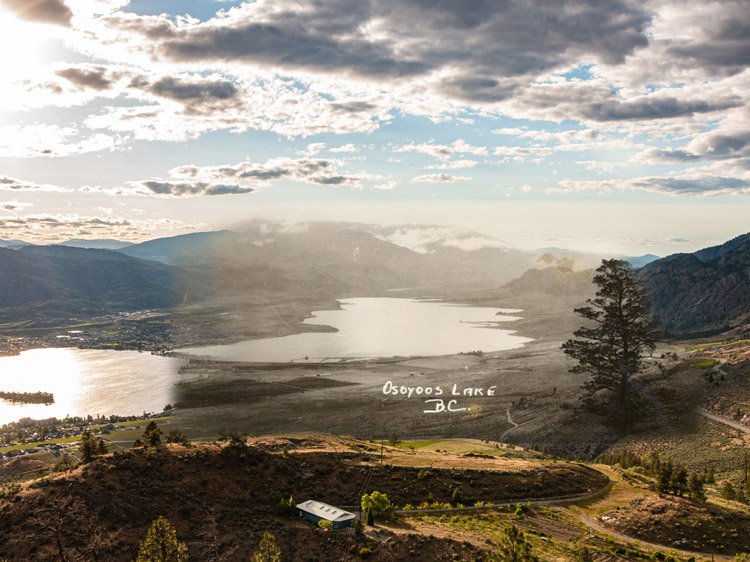Thousands of years before Europeans first arrived in the Okanagan, the Syilx People of the Okanagan Nation lived and thrived here, creating strong communities and living sustainably off the land. It wasn't until 1811 that the first European fur traders arrived in the region, and settlement began slowly after that.The town of Kaleden was founded in the early twentieth century when developer James Ritchie travelled down to the area from Summerland and fell in love with this spot. He purchased 3000 acres of land near here and subdivided it, selling it to eager farmers who had moved to the area to settle. The name of this small community was chosen in a contest and means "beautiful paradise" through a combination of the Greek word "kalos", meaning beautiful, and "Eden", referring to the Garden of Eden. In its early years, Kaleden became home to many lush orchards, and was at one point the largest producer of apricots in the Okanagan. Today, Kaleden is a small, picturesque community nestled on the shores of Skaha Lake.
This project was made possible through a partnership with Visit South Okanagan, with support from the Regional District of Okanagan-Similkameen Area "D"
We respectfully acknowledge that Kaleden is within the ancestral, traditional, and unceded territory of the Syilx People of the Okanagan Nation.
Explore
Kaleden
Stories
See Ya Later Ranch
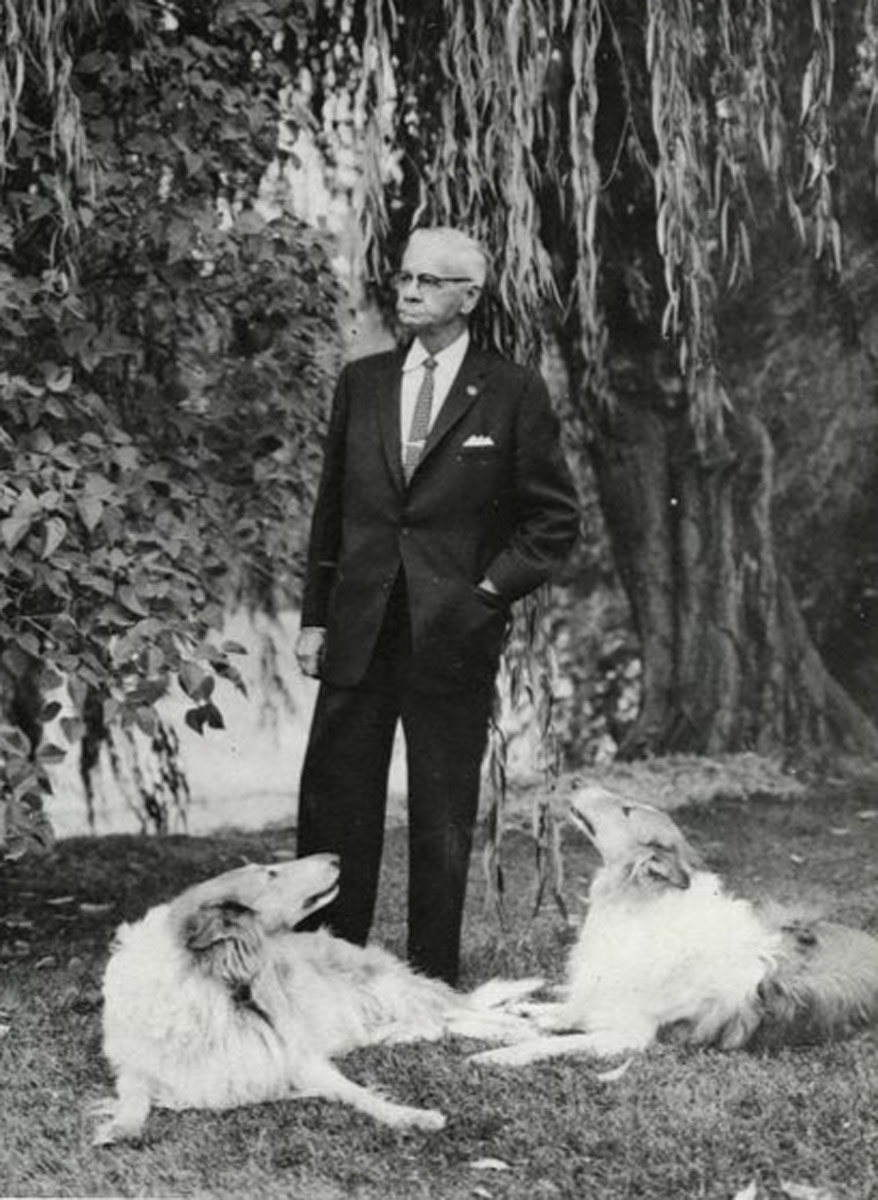
Story Location
Among the dozens of wineries and vineyards which dot the South Okanagan, one in particular comes with a deep and unique history: See Ya Later Ranch. This property, located to the south of Okanagan Falls on Hawthorne Mountain, was originally owned by the Hawthorne brothers, who acquired the land for a homestead in 1902. They then sold the property in 1919 to Major Hugh Fraser, a man who became "a legendary figure around Okanagan Falls."1
* * *
Major Hugh Fraser, who preferred to be called "The Major", was the son of a wealthy shipbuilding family in Eastern Canada and moved to the South Okanagan after the first World War. Fraser served in the 2nd Battalion during the war and was captured in 1916 by the German forces. After two years spent in prisoner of war camps, he was returned to Canada in 1919 and discharged with the rank of major. He first came to the Okanagan to visit the playwright Carroll Aikins in Naramata but quickly fell in love with the region and decided to make it his permanent home.
Fraser purchased 320 acres from the Hawthorne brothers in 1919 and built a stone house on the land, which still stands and is now home to the See Ya Later Ranch tasting rooms. He kept a few cattle, but derived most of his wealth from trading in oil stock.2
Described as a "robust", "energetic" and "generous" man, Fraser was an instrumental part of the community of Okanagan Falls and contributed greatly to the establishment of that town.3 He was a wealthy individual with a love of parties and gatherings, yet he also donated much of his time and funds to the communities he lived in. In Okanagan Falls, he supplied all of the stained glass for the windows of the United Church, donated the land for the Christie Memorial Park, served as president of the local Red Cross for five years, and brought in a group of teachers at his own expense to educate the youth of the community.4 5 He also contributed financially to the building of both the Legion Hall and the Community Hall.
The Major was an interesting character and at times seemed to be fonder of animals than people. He kept parrots, dogs, and cats as pets, and the See Ya Later Ranch property is home to a carefully tended pet cemetery, where the Major would hold funerals for his beloved animals.
Various local anecdotes illustrate his deep love for animals. An usual semi-circle shaped window in the ranch house was built solely to accommodate the cage of Major's South American parrots. During trips to and from Okanagan Falls, his cleaning lady would ride in the back of the truck, exposed to the elements, while his dogs would remain safe and warm in the cab.6 And one story tells of the time when he dismissed a housekeeper on the spot because she shooed a cat off of the dining room table.7 Major clearly felt deeply for his animals, and would mourn for days when one passed.
As for people, the Major was married when he moved to the Okanagan, but his wife spent only four days on the ranch before leaving him. She was from Montreal, and used to the bustle of the city—likely, the isolation of the ranch contributed to her decision to leave. According to local legend, she left with little notice, leaving behind a note which read "See Ya Later". One theory as to how the ranch got its name points to her note as the property's namesake, but the Major also had a habit of ending all of his correspondence with "See Ya Later", which could have also given birth to the name.
The Major never remarried, despite the fact that, according to a member of his household staff, he was being sent dozens of letters from adoring women who wanted to marry him on account of his wealthy father offering him a vast fortune should he remarry.8 He did, however, develope what was clearly a deep bond with his personal assistant and farm foreman, Bill Worth. Worth was a highly educated man whose family ran the Okanagan Falls general store. The Major left him the ranch and his entire fortune, making him his heir and adopted son, and Bill changed his name to Bill Worth Fraser.
Major Fraser retired in 1955 and moved to Penticton, where he spent the last fifteen years of his life. Worth took over the ranch in his stead, planting the first grape vines near the house in 1961. Major Hugh Fraser died in 1970, and ten years later, his beloved property was sold to an offshore investor. It sold again in 1983 to Albert and Dixie Le Compte, who opened a winery on the property three years later. The ranch has been a vineyard and winery ever since and today retains its original name.
2. The S.L.Y. Ranch
3. Ricciardi, Maggie. 81.
4. The S.L.Y. Ranch
5. Sismey, Eric D. "Major Hugh Neil Fraser of Penticton." Thirty-Fourth Annual Report of the Okanagan Historical Society. Okanagan Historical Society, 1970, pp. 50-54.
6. The S.L.Y. Ranch
7. Ricciardi, Maggie. 81.
8. The S.L.Y. Ranch
Dominion Radio Astrophysical Observatory
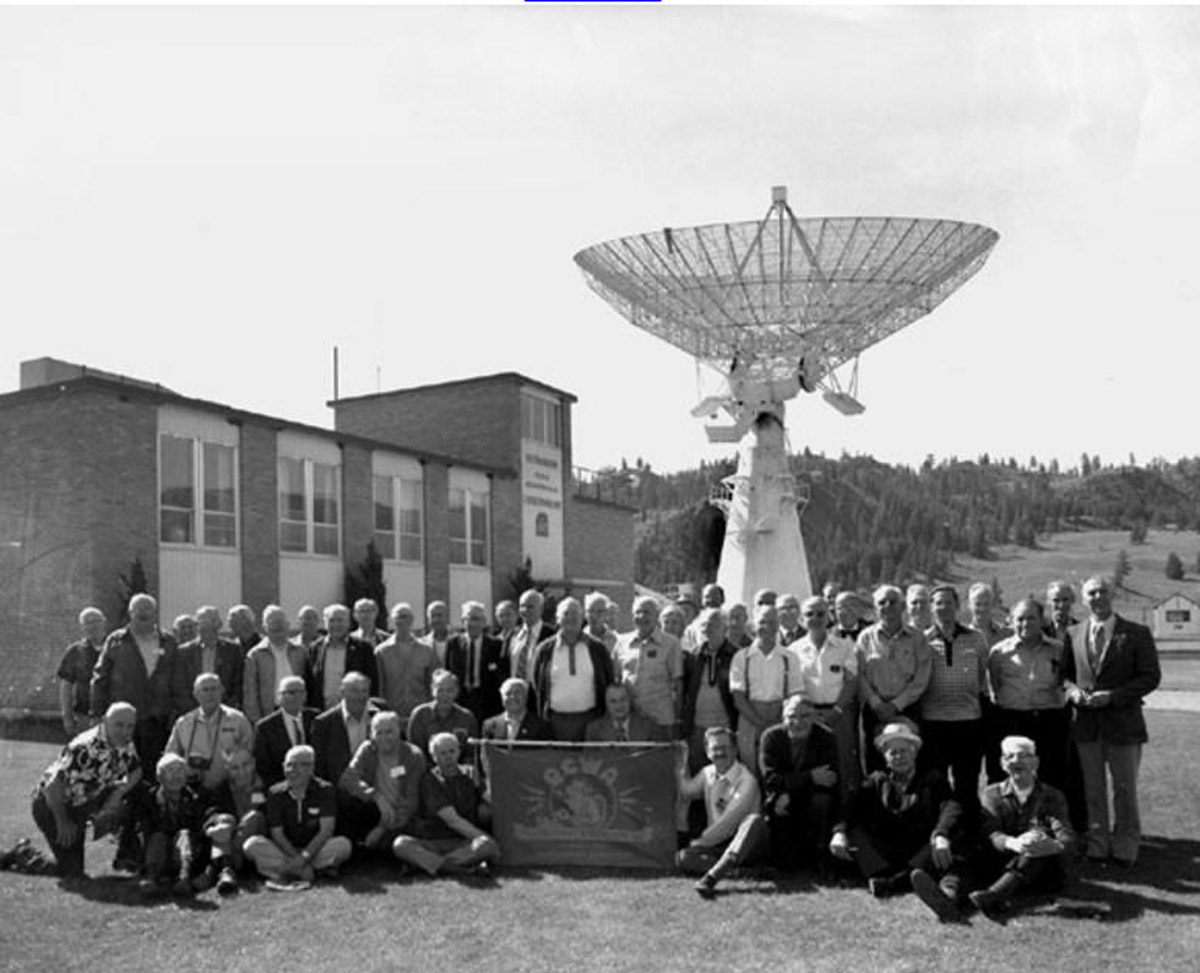
Okanagan Archive Trust Society KLD 017
Story Location
Not far from Kaleden up the White Lake Road, is the site of the Dominion Radio Astrophysical Observatory - research facility for science and technology research and development related to radio astronomy. A modern astronomer uses telescopes like the ones at this facility to study the physical processes occurring in the universe, how galaxies are formed, and the births and deaths of stars.
* * *
Astronomer Carlyle Smith Beals, who was interested in advancing the field of astrophysics in Canada, was one of the primary drivers of the new facility. The observatory opened in 1960 with its first parabolic antenna, which was used to study hydrogen. This element is the most abundant chemical element in the universe, making it highly important to the study of astronomy. By analyzing the distribution of hydrogen in the Milky Way, scientists are able to learn more about the structure in our galaxy.
Two years later, the observatory installed its second radio telescope, which took two more years to reach its full operational capacity. The telescope was constructed from 1,700 cedar posts that extended for 1.3 km in a "T" shape. The antenna of the radio telescope was formed by several thousand metres of metallic wires supported by these posts. The telescope's main purpose was to produce a map of radio sources in our galaxy.
This telescope reached its full functionality just in time for a period of minimal solar spots from 1965-1969, when very long radio waves from space were able to reach the Earth's surface. This phenomenon is only possible during periods of low solar activity.
Throughout the 1960s, this observatory worked on a number of fields of study. These included a study on solar radiation, as well as the first successful experiment on long distance interferometry ever conducted. To study distant quasars (extremely luminous astronomical objects found in the centres of some galaxies which are powered by gas spiralling at high velocity into a supermassive black hole) a telescope would need to measure across several kilometers to capture a detailed enough image to be useful. To circumvent this structural impossibility, a group of astronomers at this observatory pioneered a technique for linking two telescopes located a vast distance apart, effectively linking them into a single super-powered telescope. This successful experiment was a breakthrough in astronomical studies.
Today, the largest "dish" telescope at the observatory measures 26 metres in diameter, and collects radio waves for study. The curved surface is a reflective mirror which directs the waves to the focal point in the middle of the tripod where a small antenna collects the energy. A receiver then boosts the signal and sends it down a cable to the control building, where it is recorded. The telescope can be used for studies of diffuse clouds of hydrogen gas in our galaxy through the study of the radio waves emitted by hydrogen atoms.
The site houses four radio telescopes in total: an interferometric radio telescope, a 26-m single-dish antenna, a solar flux monitor, and the Canadian Hydrogen Intensity Mapping Experiment (CHIME). This is in addition to all the engineering labs necessary to support the telescopes. In 2010, the observatory was named an IEEE (Institute of Electrical and Electronics Engineers) Milestone for the first radio astronomical observations using VLBI. These awards are given to recognize significant technical achievements that occurred at least 25 years ago in an area of technology represented in IEEE and having at least a regional impact.
Kaleden Hotel
Okanagan Archive Trust Society KLD 008
Story Location
The modern community of Kaleden was established by founder James Ritchie in the early 1900s. Prior to this, the land was known as being a popular camping spot on the way from Okanagan Falls to Penticton. But when Richie viewed the bench lands above Skaha Lake, he envisioned them filled with fruit orchards. He had already purchased and subdivided 320 acres into what became the West Summerland townsite, but after a couple of successful years he was ready for another investment. Once he had acquired 3,000 acres of land in Kaleden, he began to plan for subdivision and irrigation: now the settlement needed a name.
In 1909, a contest was held to select the community's name, with the winner receiving a lot in the new settlement. The winning name was a combination of the Greek word "Kalos" which translates to beautiful, combined with "Eden" after the biblical garden.
* * *
As workers began the massive irrigation project and farmers began moving in, the community soon boomed and a commercial centre grew. Some of the first buildings were houses, a church, and a wooden-frame store. Meanwhile, more ambitious plans were being drawn up to include a more permanent store, a hotel, and a bank. The Bank of Montreal was so invested in the townsite that they went ahead and purchased land for both the bank and the bank manager's house.
Despite the Bank of Montreal's commitment, the first construction project began on the hotel in the fall of 1911. The building was constructed from concrete and housed 26 rooms. One unique feature of these rooms is that each contained its own sleeping porch. These were screened decks and porches installed off the bedrooms where people could sleep on nice evenings. Usually, they were located on the corners of buildings so that cool air could circulate from each direction. Not only did these porches provide some relief from the Okanagan heat, but doctors at the time believed in the power of fresh air to boost the immune system. Rooms like this were even considered one of the best treatments for tuberculosis prior to the invention of a vaccine.
The hotel's construction was completed primarily through back-breaking physical labour. Initially, the concrete was mixed by hand, before being loaded into a wheelbarrow. A worker would then maneuver the heavy wheelbarrow up 4 storeys of winding scaffolding that circled the building. Eventually a cement mixer was brought, alleviating the physical demands of at least one aspect of the construction.
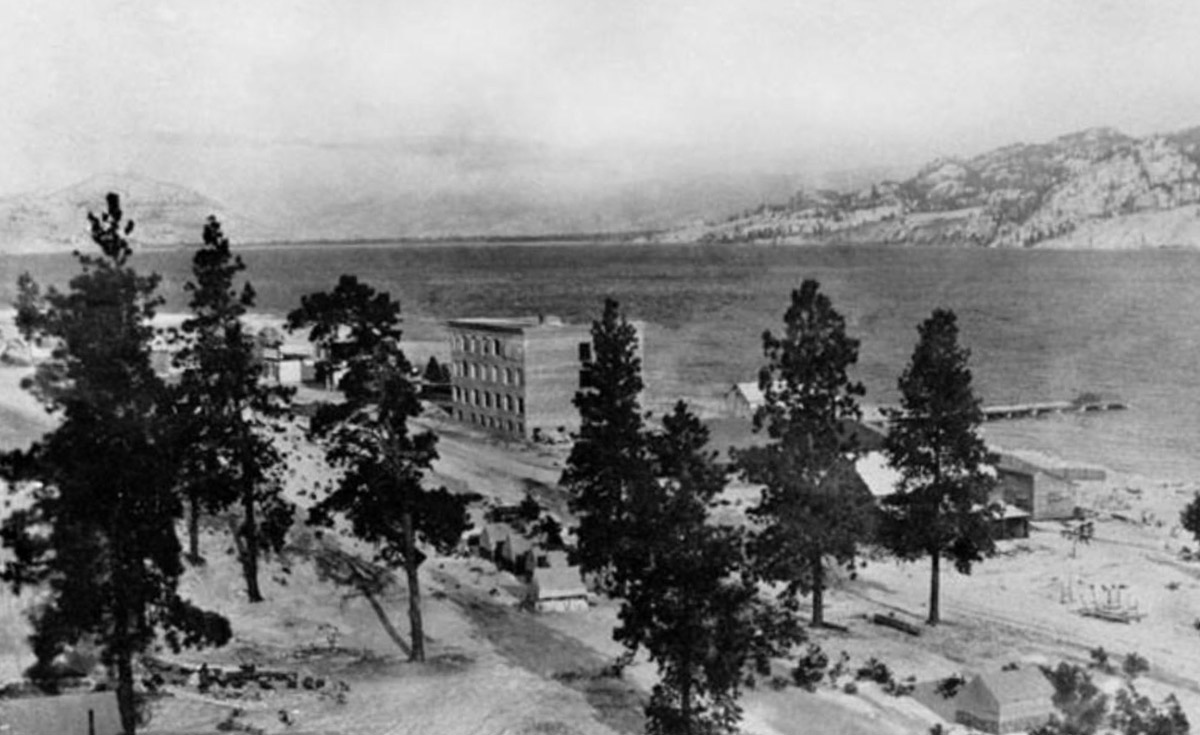
The hotel opened officially in 1912, at the same time as the new community's general store. The same construction crew worked on both, as well as on a house near the top of the hill.
Early on, the hotel also served other purposes. The post office operated out of the building temporarily while a designated post office was being built. From 1909 - 1910, someone had to go to Okanagan Falls three days a week to retrieve the mail. When the lake froze over, many skated down there, causing many excited volunteers to sign up for mail duty.
Fruit packing in Kaleden began in the hotel’s basement - before that, apricots were sent to Penticton for packing. After some time, a packing house was built in Kaleden and it stood where the community hall is now.
Despite the community's promising start, the outbreak of the First World War ground development to a halt. The expensive irrigation project was largely funded with British capital, and war caused that capital to dry up and the project was abandoned. The hotel, which had only operated for two and half years, was forced to temporarily close its doors when the majority of the local labour force enlisted. Later on, the hotel's furnishings were sold. Eventually, despite rumors that the hotel would be converted to a sanatorium or a senior's home, the hotel was instead completely stripped, leaving the concrete skeleton that stands today.
In the 1990’s, local restaurateur Allan Dell headed a movement to partially restore the hotel and make an entertainment venue out of it. The idea was controversial and not everyone in the community was in support. An engineering report was done to assess the scale of the restoration, but no work was ever done.1
https://www.keremeosreview.com/news/kaleden-waterfront-celebrates-100-years/
Then and Now Photos
The Tomlin House
Okanagan Archive and Trust Society KLD 016
1910
In this photograph from 1910, a group of early Kaleden settlers poses in front of the Tomlin house.
Canoeing in Kaleden
Corbitt, H.W. The History of Kaleden, Kaleden Centennial Committee, 1958, pp.50
1911
During Kaleden's early years, canoeing on Skaha Lake was a popular past-time. In 1911, two Kaleden settlers, Hatfield and Corbitt, bought nine canoes from New Brunswick and quickly sold them to other community members. This photograph from that same year shows Kaleden residents out enjoying the water.
A View of the Hotel
Okanagan Archive Trust Society KLD 010
1912
This view looks north from the South Bench in Kaleden. The Kaleden Hotel, opened the same year this photo was taken, is visible in the centre of the image, with the wharfs and packing houses (partially hidden by trees) to the right.
Hatfields General Store
Okanagan Archive Trust Society KLD 003
1912
This photograph from 1912 shows a car parked in front of the Hatfields General Store, with Skaha Lake in the background. The Hatfield family came to the Okanagan from Nova Scotia in 1907 and settled in Kaleden two years later.
The OK Game Farm
ca. 1970s
The Okanagan Game Farm, the gates of which are shown in this photograph, opened in 1967 and operated until 2000. Located on land rented from the Penticton Indian Band, it contained 130 species of animals—everything from rhinos and giraffes to sheep and bears.

